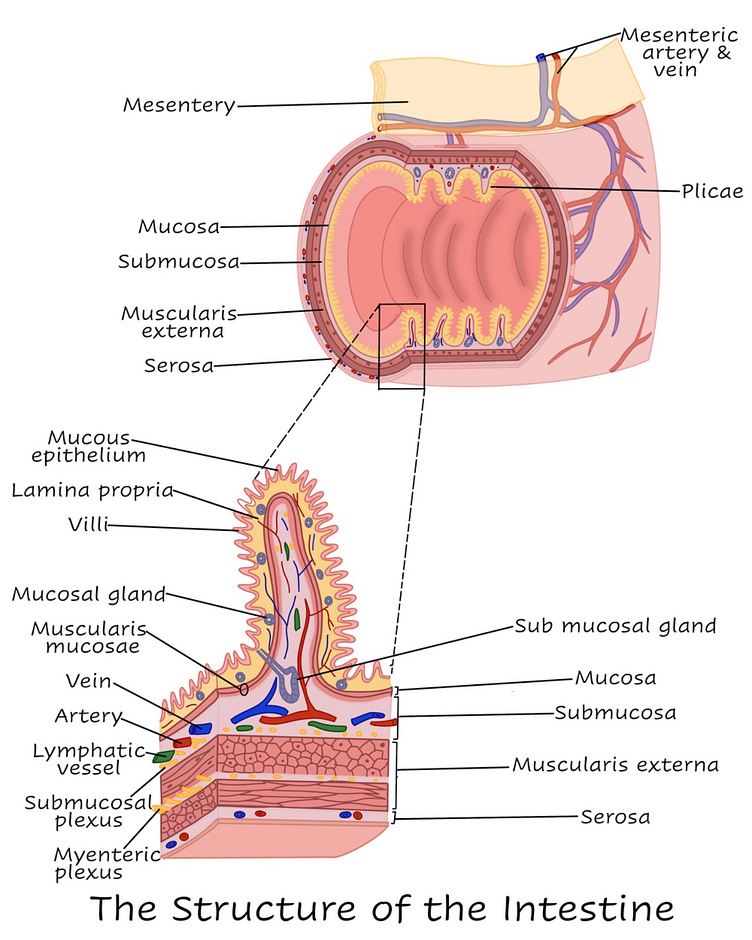The Structure of Small Intestine
The intestine, a vital organ in the human digestive system, is a long, tubular structure with a highly specialized internal architecture. Divided into the smaller, finger-like projections called villi and even smaller hair-like structures known as microvilli, the intestine maximizes its surface area for efficient nutrient absorption. Beneath this surface, a complex network of blood vessels and lymphatics facilitates the transport of absorbed nutrients to the rest of the body. The intestine is lined with a single layer of cells that form a barrier, preventing harmful substances from entering the bloodstream while allowing nutrients to pass through. Additionally, the intestine contains various types of cells, including goblet cells that secrete mucus, aiding in smooth movement and protection of the delicate lining. Together, these structural features enable the intestine to play a crucial role in digestion and nutrient absorption, ensuring the body receives essential sustenance for optimal health.
